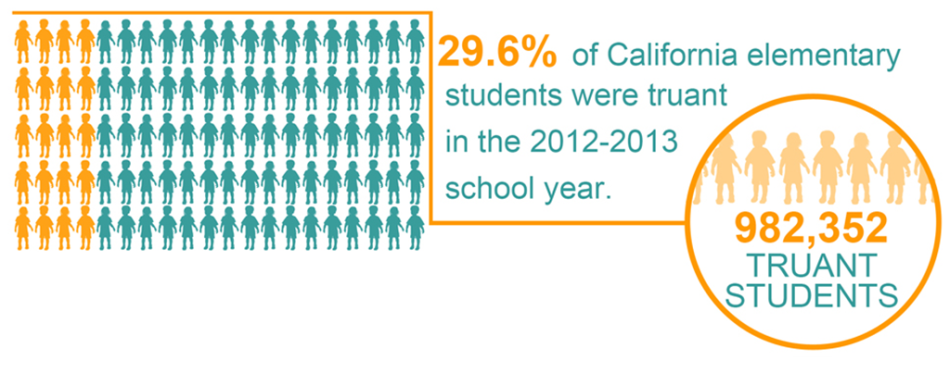Students or Truants?
Truancy is growing to be a big problem in California. Statistics provided by the California Department of Education show that 29.6% of elementary students in California were truant in the 2012-2013 school year.
Students all over the country, even in California are committing crimes without even knowing it. By being absent from school without a valid excuse is classified as truancy which is illegal.
The creation of a successful, respected school is created by having a sound structure along with engaging curriculum that the students are able to be exposed to. This may seem pretty obvious, but what’s a lot less obvious is how serious truancy affects not just the attendance records of students, but also the school itself and the committee it resides in.
Attendance rates play a very important role in determining key characteristics of top notch schools. The state Department of Education averages up the attendance reports every year and compares this average to individual schools such as Monte Vista. By comparing the state’s average attendance records to individual school’s attendance records, the Department of Education is able to “rate” the “quality” of schools.
Now what makes a normal everyday student a truant? Well there are actually two classifications of truants. The first is a habitual truant, when a student is repeatedly absent without a valid excuse for 5 or more days in a school year. Then there are chronic truants who are students who are continually absent without a valid excuse for 10% or more of the school year.
Based on these definitions, about 29.6% of elementary students were truant in the 2012-2013 school year. This totals out to be 982,352 truant students. When looking a little deeper, in the 2011-2012 school year, 28.6% of elementary students were truant in the Contra Costa County. With truancy rates so high, this affects the ratio of how many inmates are high school dropouts. In the last several years, it has been calculated that 82% of inmates in the US are high school dropouts. Needless to say, stay in school.
Along with affecting the students, truancy also affects the schools themselves. In response to truancy, school budgets can suffer because in many states, schools are paid according to their daily attendance rates. Because of this some schools don’t have enough money to fund for classroom essentials; ending up in a poor school quality and a tarnished reputation.







